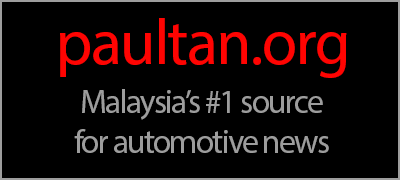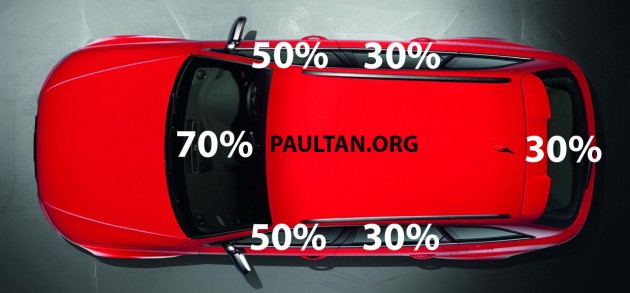The government is set to introduce new regulations for vehicle window tinting. While no details were revealed about the new rules, transport minister Anthony Loke said that the changes would come into effect soon, The Star reports.
“I will announce the new policy after bringing the road transport department (JPJ) amendments to parliament later this month,” he said.
Vehicle tinting guidelines were last revised in February 2016, when updated regulations, filed under Motor Vehicles (Prohibition of Certain Types of Glass) (Amendment) Rules 2016 replaced the previous 1991 rules. The current regulations stipulate that the minimum visible light transmission (VLT) percentages are 70% for the front windscreen, 50% for the front side windows, and 30% for the rear windows and the rear windscreen.
In October last year, JPJ refuted claims made on social media that new regulations would be implemented in 2018. It was also reported then that there were plans to introduce a new Malaysia Standard (MS) 2669 standard in January this year.
The standard, set by the Department of Standards Malaysia, was to have tint films identifiable by QR code labels, enabling enforcement officers with the compatible mobile app to obtain the film’s full specification by scanning the code.
Looking to sell your car? Sell it with Carro.



AI-generated Summary ✨
Comments express frustration with the inconsistency and enforcement of vehicle window tinting rules, with some feeling the regulations are unfair and poorly implemented. Many believe the rules are more about generating revenue through fines rather than safety concerns, criticizing enforcement officers for selective targeting. There are debates about the necessity of tinting for heat and UV protection, with some arguing that darker tints are harmless and beneficial given Malaysia's climate. Several commenters suggest the government focus on more critical safety issues like reckless driving, vehicle maintenance, and proper enforcement. Overall, there is skepticism regarding the effectiveness and fairness of current and proposed regulations, with criticism aimed at the transport authorities and ministers for frequent rule changes and lack of consistent enforcement.